
A Guide to Japanese Donburi: We Asked an Expert About the Basics and How to Enjoy this Traditional Dish!
- Written by: Miyu Shimada
Donburi or don are dishes where you put various toppings on bowls of rice. In Japan, this dish has a variety of names including donmono and donburimono.
Donburi dishes such as katsudon (a deep-fried pork cutlet bowl), gyudon (beef bowl), and oyakodon (chicken and egg bowl), are popular throughout many countries outside of Japan.
Here we will introduce what donburi is, how to enjoy it, and a basic guide on donburi given by an expert. The expert we have interviewed is Ms. Ito, a director at the incorporated foundation, All Japan Donburi Union.
Brief History of Donburi: What in the World are Japanese Rice Bowls?
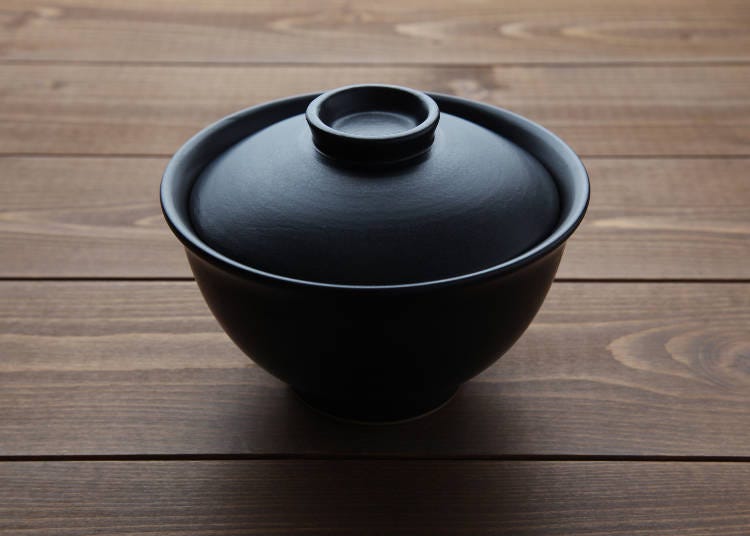
Q. What are donburi dishes?
-Donburi was originally used as a word to describe a type of bowl or dish. In addition to still being used in this way, it’s also now a word to describe a type of cuisine where bowls are filled with rice and various toppings.
Consequently, the meaning of this word changes depending on the context. What’s more, donburi has quite a few names.
When it comes to the bowl itself, it can be called a don or a donburi-bachi. When referring to donburi as a rice bowl dish, it can be called a donburi, don, donmono, or donburi-mono. All of these words have the same meaning.
As for how donburi cuisine was born, it’s been said that it originated from a dish created during the Muromachi period called houhan. Houhan was a dish where rice was piled onto a plate and then topped with vegetables, stewed dishes, fish, and some sauce or soup.
This became a common dish among the general public during the Edo period. Before it became widely accepted, scooping up food directly from one bowl or dish was recognized as impolite. However, due to a cultural change where eating on the go became necessary, donburi-style dining increased in popularity.
(* Hikyaku: a courier)
Q. Where did the name donburi come from?
-There’s a theory on this as well. Shops that were quick to serve their customers' dishes in bowls were called kendonya. These could be compared to the beef bowl chain restaurants or fast-food shops you see today. The bowls used at such shops were called ken-donburi-bachi. It’s said that eventually, this was shortened to donburi.
Another theory is that donburi is named after the front pocket of an apron. In Japan, the act of roughly calculating the cost of something is called a donburi calculation. Long ago, people would calculate the bill by taking out money from and putting it away in a pocket known as the donburi. It’s said that the donburi pocket filled with money was reminiscent of the act of rice getting filled or covered with toppings, thus adopting the name.
Q. Please tell us how to define a donburi dish.
No one has ever offered a clear answer when it comes to what defines a donburi dish. To make things a little easier, the All Japan Donburi Union has decided that a donburi bowl must have a radius of over 15 centimeters, a height of five centimeters, and include some sort of topping over rice.
However, this is not an official guideline, so if anyone makes a dish with a smaller rice bowl and some toppings on it, that could also be considered a donburi. For example, when entering the All Japan Donburi Union’s annual Donburi Grand Prix competition, our rule is to let anyone who considers what they’ve made to be a donburi qualify. With this in mind, there are many different ways to enjoy and define what a donburi is depending on the person. I think it’s a very versatile dish.
Japan and Donburi: Exploring the Birth of Donburi Culture in Japan
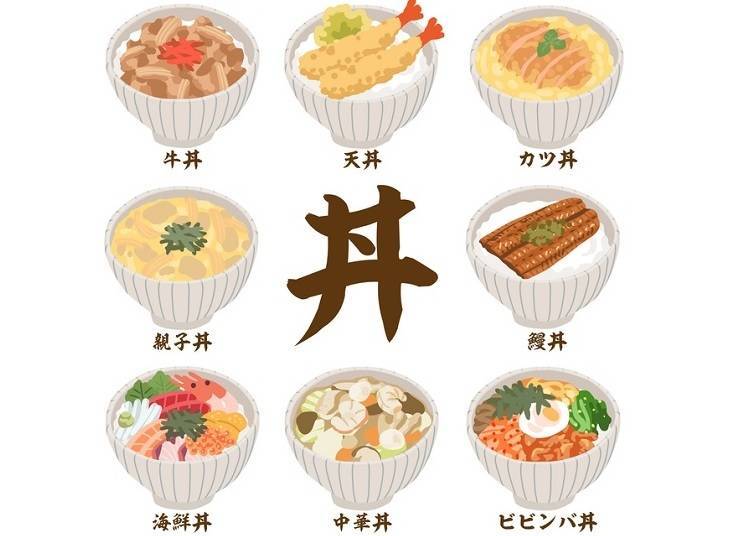
Q. Why do you think a dish like donburi exists in Japan?
-This is just my opinion, but I think this dish exists because the staple food of Japan is rice. Also, the way you pile the rice into your mouth from the bowl is not really allowed with any other Japanese dish.
When it comes to Japanese table manners, it’s considered impolite to put your mouth on the plate of food you’re eating from. However, instead of using spoons or forks, Japan has a culture of using chopsticks.
Because of this, it’s easier to eat your meal by piling food from your plate directly into your mouth or putting your mouth directly on a bowl when drinking soup. Items that cannot be picked up by chopsticks are eaten using this method.
Since donburi was made when this way of eating was the standard, it’s hard to imagine it being created in other foreign countries where there’s no culture of putting your mouth directly on bowls or plates when eating.
Furthermore, while being highly nutritious and filling, donburi offers both rice and the main dish in one bowl. This is a simple dish that you can eat anywhere with anyone. Additionally, it’s a great dish for when you’re in a hurry because it is served fairly quickly after you order it. It’s the perfect lunchtime option for busy Japanese workers looking for something quick.
Standard Donburi: What Kinds of Donburi Are There?
Q. Is there a standard type of donburi?
-No one knows exactly from which shop each donburi came from. The only one that can be traced is Tamahide, the shop known for creating oyakodon. Other than that, the first tendon (a rice bowl topped with various kinds of tempura) is said to have originated from either Sansada, a shop located in Asakusa, or Hashizen (now permanently closed), a restaurant that used to be located in Tokyo’s Shinbashi district. Because of this, it’s hard to choose or say what a standard donburi dish is.
A donburi I would like to recommend to people abroad, due to how easy it is to eat and its popularity in Japan, is katsudon. If you’re looking for something a little more traditionally Japanese, I would recommend tendon.
Additionally, if you would like to try a dish with different characteristics depending on the region, I would recommend kaisendon, a rice bowl topped with various kinds of fresh sashimi.
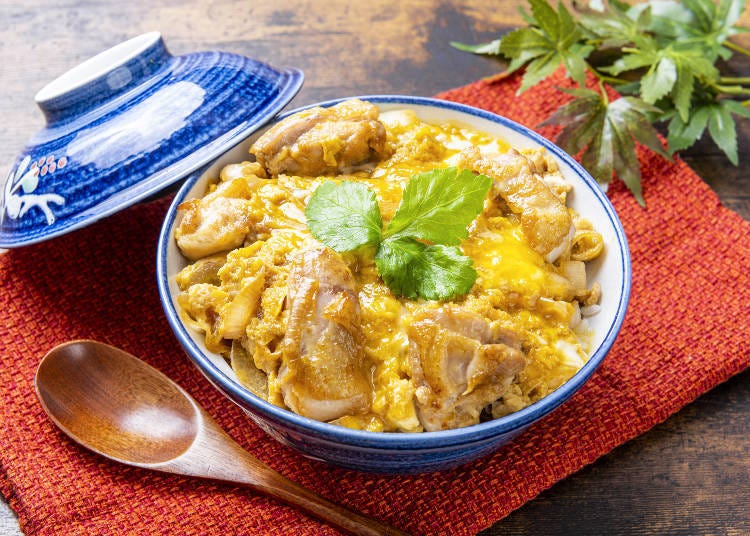
Q. What are some unique kinds of donburi?
-A traditional type of donburi from Kyoto that incorporates yuba (tofu skin) is the konohadon. In addition to this, there’s the aburafudon. This is a type of donburi often had in Miyagi and Iwate Prefecture, which uses aburafu (deep-fried wheat gluten) as its main ingredient.
What’s more, there’s the donburi topped with tofu simmered in a stock called the tofu-don (also called tofu-meshi). There’s even the foie gras-don, in which rice is luxuriously topped with pieces of foie gras.
Lastly, with a focus on the visual intensity of the dish rather than what’s used, you will find many super-sized donburi options that pile a variety of ingredients onto one bowl.
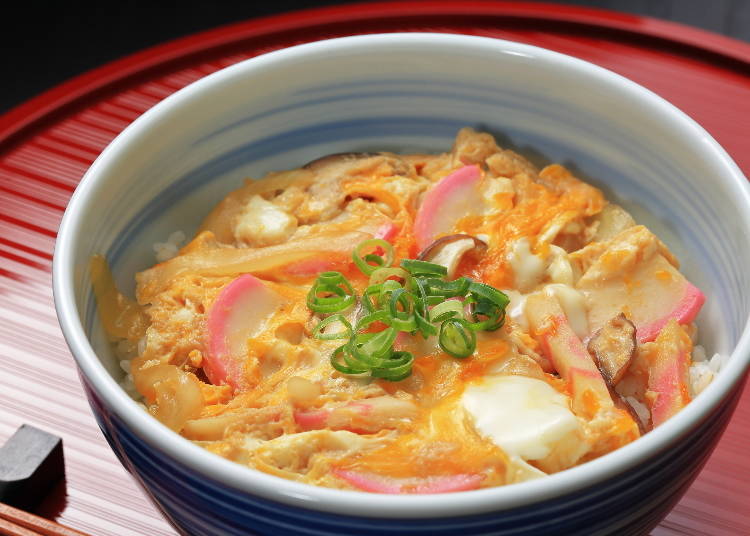
Q. Please tell us about the recent trends.
-In the last couple of years, there have been many healthy donburi options such as poke bowls and salad bowls. Before covid, many shops came out with halal or gluten-free options to cater to the increasing number of foreign visitors. Because of this, I think there has been a lot more variety in the types of donburi available.
Moreover, especially after 2020, there has been a surge in donburi takeout options. It also helps that donburi is originally an easy dish to get on the go. Some options you might often find are the karage-don, a rice bowl topped with the popular takeout item of Japanese fried chicken, and kaisendon inspired by the popularity of sushi.
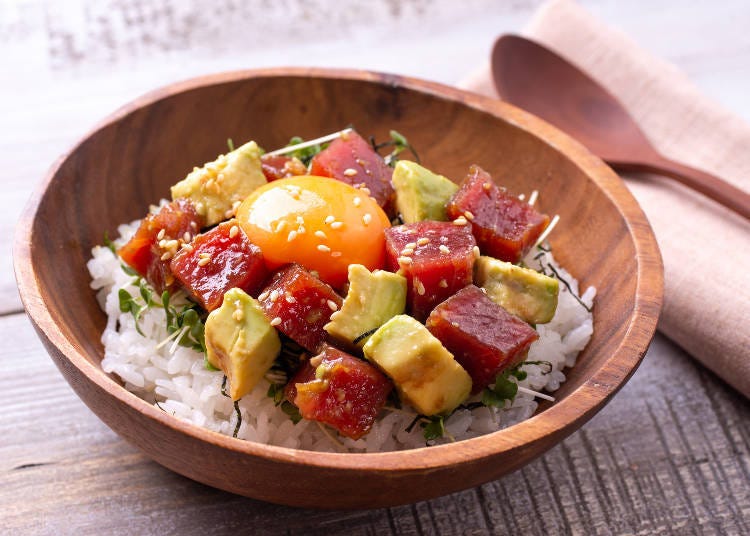
The Allure of Donburi: How to Further Enjoy It!
Q. What is the allure of a donburi dish?
-Because the concept of this dish is so simple, with rice and toppings being the only requirements, there are so many different types of donburi available. The characteristics and unique qualities of donburi can differ depending on the household, restaurant, and region. I think this is what makes it alluring and interesting.
When it comes to donburi you eat at restaurants, the balance between the rice and toppings is considered especially important.
Because of the balance of the ingredients, how flavorful the sauce is, and the amount of everything that goes into the bowl is tested to perfection, donburi offers an enjoyable experience different from your standard Japanese meal.
The toppings complement the rice, and the rice compliments the toppings. Donburi is a dish where these two ingredients are better together. Depending on the shop and menu, donburi dishes can be completely different. I would like those who try this dish to enjoy it the way they want to.
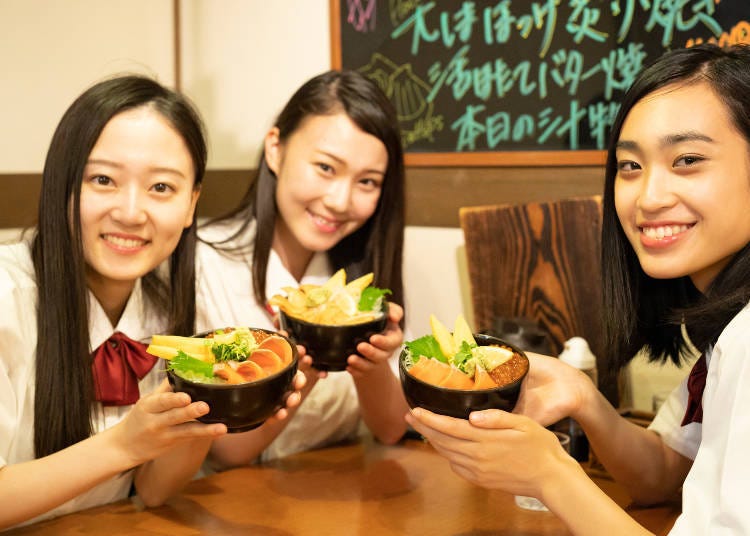
To add to this, donburi is an original dish that emerged from Japan making a bowl called donburi and its staple food of rice. In just one bowl, you can taste the history, characteristics of a region, the passion of the chef, and more! Please try this seemingly simple but profound dish!
About the Interviewee
-
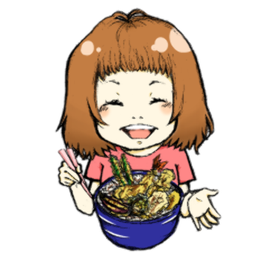 Don Ito
Don Ito
While working as an office worker, Ms. Ito worked as a director at the general incorporated foundation, All Japan Donburi Union. This union was established to bring donburi fans together and revitalize neighborhoods by enjoying donburi dishes. With a focus on the central Tokyo area, it has tried over 600 types of donburi.
*All Japan Donburi Union
http://don.or.jp/
An organization of donburi lovers from all over Japan, which exchanges information on rice bowls on Facebook and organizes the annual Don Grand Prix to promote donburi and develop the donburi industry.
Miyu is a travel writer and tour conductor with over a decade of experience in developing educational content for working individuals. She has a passion for exploring new cultures and has visited more than 150 cities in around 50 countries. Her goal is to sample great food, experience nature, enjoy historical sites, and bathe in hot springs around the world. Miyu left her corporate job to pursue her passion for travel and now spends over 100 days a year abroad while working as a writer. She promotes the joy of travel, the beauty of Japan, and the diverse cultures of the world by traveling to different parts of Japan and collaborating with inbound tour operators and fellow travel writers.
- Area
- Category
*Prices and options mentioned are subject to change.
*Unless stated otherwise, all prices include tax.
Popular Tours & Activitiess
Recommended places for you
-

Black Friday 2025: These Are THE Japan Travel & Shopping Deals to Check Out
-

Get Ready to Catch 'Em All! First Ever Permanent Outdoor Pokémon Park Opening Near Tokyo!
-

2025 Autumn Colors Report: Kurobe Gorge Nearing Peak
by: Timothy Sullivan
-

A Travel Game Changer! Go Hands-Free Between Tokyo and Kyoto with LUGGAGE EXPRESS by JTB and JR Tokai
by: Guest Contributor
-
Ad

Walk in the Footsteps of Believers: A 4-Day Pilgrimage Across Goto Islands, Nagasaki Prefecture
by: Yohei Kato
-

Don't Miss Out! The One Thing You Must Do Before Shopping at Mitsui Shopping Park LaLaport: Get Your Max 10% OFF Coupon Book
Inspiration for Accommodations
-

Enjoy Mt. Fuji from the Comfort of Your Room! Recommended Ryokan with Mt. Fuji View
-

Stay Near the Cherry Blossoms! Hotels for Cherry Blossom Viewing in Tokyo
-

Family-Friendly Hotels with Free Shuttle to Disneyland: Convenient Access for a Magical Stay
-

Top Ranked Hakone Hotels with Mt. Fuji View: Enjoy Stunning Scenery from Your Private Space
-

Convenient Tokyo Hotels with Airport Shuttle: Ideal for Families and Heavy Luggage
-

Stunning Tokyo Tower View Hotels: Enjoy Spectacular Scenery from Your Private Space
-

Convenient Asakusa Hotels with Kitchens: Ideal for Extended Family Visits
-

Experience Luxury: Hakone's 10 Best Five-Star Accommodations
-

Enjoy Mt. Fuji Autumn Leaves! Top Hotels Near the Popular Autumn Leaves Corridor
-

Experience Hakone Fall Foliage from Your Room with Stunning Views
-

38 Foreign Visitors Share Their Favorite Japanese Foods (+Ones They Recommend Against)
-

3 Tasty Donburi Dishes in Tokyo: Recommendations from a Japanese Food Expert
by: Miyu Shimada
-

Atami 1-Day Itinerary: Exploring Japan's Castle & Hot Springs Resort Town Near Tokyo!
-

Numazuko Kaisho in Ueno: Good Quality, All-You-Can-Eat Seafood for Just US$12!?
-

Tokyo Train Map: Your Essential Guide to Subways and Railways
-

Matcha: Snacks and Sweets
- #best ramen tokyo
- #what to buy in ameyoko
- #what to bring to japan
- #new years in tokyo
- #best izakaya shinjuku
- #things to do tokyo
- #japanese nail trends
- #what to do in odaiba
- #onsen tattoo friendly tokyo
- #daiso
- #best sushi ginza
- #japanese convenience store snacks
- #best yakiniku shibuya
- #japanese fashion culture
- #best japanese soft drinks



















